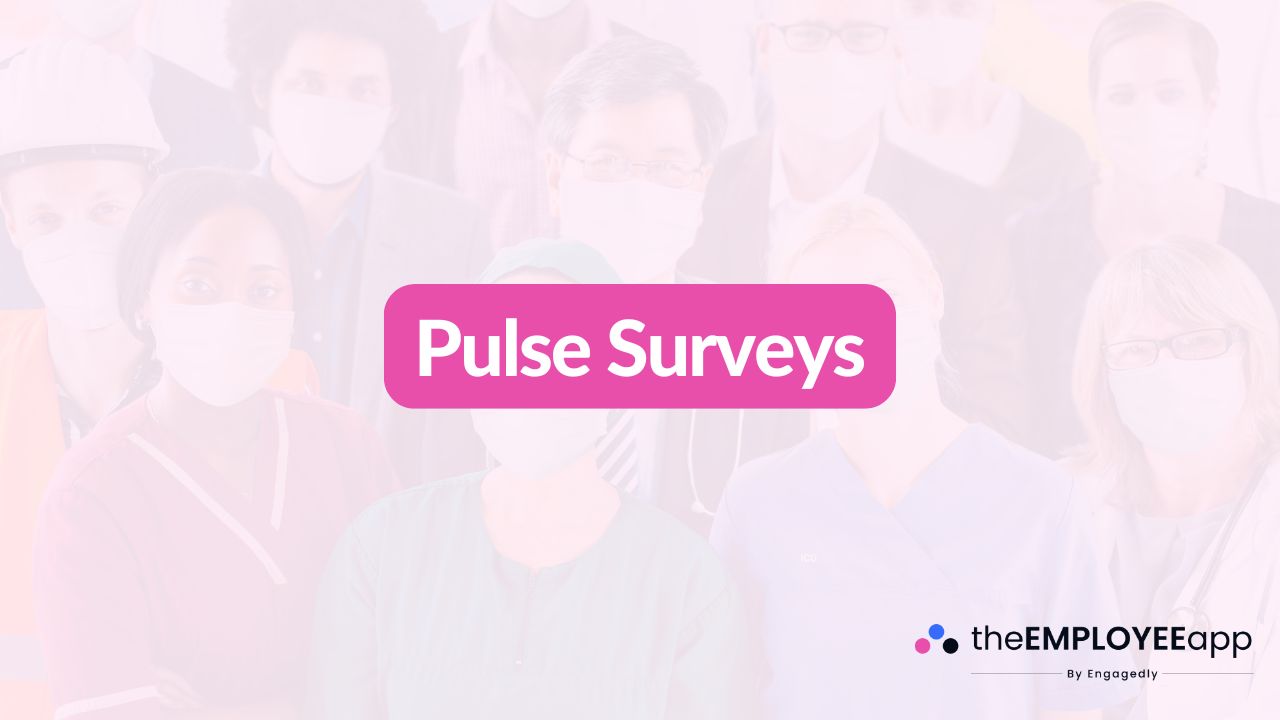
Pulse Surveys
Pulse surveys are short, frequent employee surveys designed to capture real-time feedback on workplace experiences, satisfaction, and engagement. Unlike traditional annual surveys, which tend to be lengthy and conducted once or twice a year, pulse surveys are concise, easy to complete, and administered on a regular basis. Their name comes from the idea of taking the “pulse” of the organization—quickly checking in on how employees feel about their work, leadership, and overall culture.
The primary goal of pulse surveys is to provide organizations with timely insights into employee sentiment. This allows leaders to act swiftly, make informed decisions, and continuously improve the employee experience. By gathering quick snapshots of feedback, companies can identify issues before they escalate and measure the impact of new initiatives.
Why Pulse Surveys Are Important
In today’s fast-changing workplace, employee attitudes and morale can shift rapidly. Annual surveys often fail to capture these shifts in time to make a difference. Pulse surveys address this gap by offering continuous feedback loops. With more frequent touchpoints, organizations can stay connected to their employees and respond to concerns in real time.
Employees also value pulse surveys because they feel heard more consistently. Instead of waiting months for their voices to matter, they can provide input on current issues that directly impact them. This creates a culture of transparency, where employees trust that their feedback is both welcomed and acted upon.
Key Benefits of Pulse Surveys
Faster insights: Organizations receive immediate feedback, allowing them to address problems quickly.
Improved engagement: Regular check-ins show employees that their opinions matter and build trust.
Simplified participation: Shorter surveys take only a few minutes to complete, increasing participation rates.
Actionable data: Frequent results provide managers with measurable trends and patterns to guide decisions.
Better communication: Pulse surveys open up a two-way dialogue between leadership and employees.
Examples of Pulse Survey Topics
Pulse surveys can cover a wide variety of subjects, depending on organizational priorities. Common areas include:
Employee satisfaction: How employees feel about their job, workload, and role clarity.
Manager effectiveness: Assessing whether leaders are providing the right support and guidance.
Workplace culture: Understanding if employees feel valued, included, and motivated.
Change management: Gathering reactions to new policies, initiatives, or structural changes.
Well-being: Checking in on stress levels, work-life balance, and overall morale.
By rotating topics, organizations can keep surveys fresh and avoid fatigue, while still gaining a holistic view of employee experiences.
Pulse Surveys and Employee Engagement
Employee engagement is a key driver of productivity, retention, and organizational success. Pulse surveys are one of the most effective tools to monitor engagement continuously. They allow organizations to measure how employees are connecting with their work and the company’s mission on an ongoing basis.
For instance, if a pulse survey reveals declining morale in a specific department, leaders can quickly investigate, identify the root cause, and implement changes. This proactive approach not only boosts engagement but also helps reduce turnover and build stronger teams.
Best Practices for Pulse Surveys
Keep them short: Limit questions to five to ten for higher completion rates.
Focus on clarity: Use simple, direct questions to avoid confusion.
Be consistent: Conduct surveys on a regular schedule, whether weekly, monthly, or quarterly.
Act on feedback: Share results with employees and demonstrate the actions taken.
Use anonymity wisely: Encourage honest feedback by making surveys confidential when needed.
The Future of Pulse Surveys
As organizations embrace digital transformation, pulse surveys are becoming even more advanced. Modern tools can analyze feedback in real time, highlight trends, and integrate results with other HR systems. Artificial intelligence can also help detect sentiment and prioritize areas that need urgent attention.
The future of workplace communication is rooted in continuous listening, and pulse surveys are at the center of this shift. They empower employees to express their perspectives regularly and give organizations the insights they need to adapt quickly in an evolving business environment.
Conclusion
Pulse surveys have transformed how organizations listen to their employees. By offering frequent, easy-to-complete feedback opportunities, they create stronger connections between employees and leadership. The insights gained from these surveys enable organizations to act faster, boost morale, and build a healthier workplace culture. Ultimately, pulse surveys are more than just a feedback tool—they are a powerful driver of employee engagement and organizational success.
